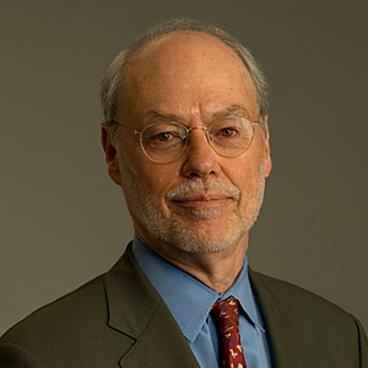Last week, a panel co-chaired by MIT Institute Professor Phillip Sharp called for the United States to launch a new biology initiative to accelerate breakthroughs that could solve some of society's most pressing problems. The National Institutes of Health, National Science Foundation and U.S. Department of Energy asked the committee that wrote the report — which included MIT Professor Douglas Lauffenburger — to look at how best to build upon recent scientific developments such as the Human Genome Project. The resulting report is called "A New Biology for the 21st Century: Ensuring the United States Leads the Coming Biology Revolution." In this interview, Sharp explains his vision for the initiative, which has a proposed timeline of 10 years.
Q: What societal challenges do you think the new biology initiative should tackle?
A: First, there's energy — how to achieve sustainable energy in forms that can be transported and contribute to transportation. There's food — how to feed the 8.4 billion people that we see projected to be on Earth by mid-century, and the 6 billion or so that are here now. There's climate — how to do all this while maintaining the quality of our environment, global warming obviously being part of that climate challenge. And, lastly, the issue of health. The challenge everyone sees is to integrate all the biological and genetic and environmental information we have, and will collect in the future, into personalized medicine. With personalized medicine, an individual could be counseled to prevent the development of a disease, and physicians could treat the disease more effectively with drugs that will work in that individual and avoid using drugs that won't work.
It might surprise some people, but if you look at all four of these challenges, a major force for innovation to address these is going to be advances in life sciences.
Q: How much funding would the initiative require, and what kinds of research and education would it support?
A: The report didn't call for specific levels — we weren't allowed to, by the National Academy — but somewhere around a half a billion dollars for each of the four initiatives over 10 years would be a very generous level of funding and I think would benefit the country enormously. If you actually look at these areas of foundational science, such as plant biology, some aspects of computational biology, and some aspects of systems or synthetic biology, increasing funding by several hundred million a year over 10 years would actually almost double the amount of research being done at that foundational level. For the country, you can't imagine how important that investment would be over a long period of time.
We can't advance these areas of life sciences unless we engage more physicists, chemists and computational scientists into these processes, and we need to engage them on their territory. We strongly encourage the investment to be managed by interagency activities, so physicists who have worked in past with the Department of Energy or Department of Defense or National Science Foundation would feel comfortable getting involved with these initiatives. This is moving the realm of life science research beyond where it has traditionally been in the academy.
If you're going to sustain these advances, obviously you have to educate the next generation to make their contributions. We point out in the report that students who are planning to enter research areas of life science, in K-12 and the undergraduate and graduate levels, need to have more training in quantitative and computational tools. Life science is changing — we're dealing with very large amounts of information, we're developing computational programs and other things that allow us to handle that information, and students need to be prepared for that world.
The second thing we say in the report is that students have to be trained in a way that makes them at ease in interdisciplinary studies. That doesn't mean we should train students to know a little bit about everything, because in that case the student knows nothing. We should train students to be fundamentally deep and sound in a discipline, because then they learn how to critically think and to create at the forefront of a discipline, and we should train them in an environment where they interact with other disciplines and learn the language and thought processes and traditions of other disciplines.
Q: Do you think there is political support for what you are trying to achieve, especially given the ballooning federal budget deficit?
A: I think everybody we presented the report to sees the fundamental validity of the report and the recommendations. Some in the Obama administration, including science adviser John Holdren '65, SM '66 and others in the executive branch, see the promise of interagency activities and are interested in stimulating those. It is a challenge to think of expansion of funding in the coming budgets. However, you have to make the case, and make the case again and again and again, and hopefully people will decide that this investment is more important than some other investments, and allocate money for it. I'm totally confident that if the country is able to make these investments, it will be one of the highest leveraged investments, in terms of benefits for the country, it could make.
Q: What societal challenges do you think the new biology initiative should tackle?
A: First, there's energy — how to achieve sustainable energy in forms that can be transported and contribute to transportation. There's food — how to feed the 8.4 billion people that we see projected to be on Earth by mid-century, and the 6 billion or so that are here now. There's climate — how to do all this while maintaining the quality of our environment, global warming obviously being part of that climate challenge. And, lastly, the issue of health. The challenge everyone sees is to integrate all the biological and genetic and environmental information we have, and will collect in the future, into personalized medicine. With personalized medicine, an individual could be counseled to prevent the development of a disease, and physicians could treat the disease more effectively with drugs that will work in that individual and avoid using drugs that won't work.
It might surprise some people, but if you look at all four of these challenges, a major force for innovation to address these is going to be advances in life sciences.
Q: How much funding would the initiative require, and what kinds of research and education would it support?
A: The report didn't call for specific levels — we weren't allowed to, by the National Academy — but somewhere around a half a billion dollars for each of the four initiatives over 10 years would be a very generous level of funding and I think would benefit the country enormously. If you actually look at these areas of foundational science, such as plant biology, some aspects of computational biology, and some aspects of systems or synthetic biology, increasing funding by several hundred million a year over 10 years would actually almost double the amount of research being done at that foundational level. For the country, you can't imagine how important that investment would be over a long period of time.
We can't advance these areas of life sciences unless we engage more physicists, chemists and computational scientists into these processes, and we need to engage them on their territory. We strongly encourage the investment to be managed by interagency activities, so physicists who have worked in past with the Department of Energy or Department of Defense or National Science Foundation would feel comfortable getting involved with these initiatives. This is moving the realm of life science research beyond where it has traditionally been in the academy.
If you're going to sustain these advances, obviously you have to educate the next generation to make their contributions. We point out in the report that students who are planning to enter research areas of life science, in K-12 and the undergraduate and graduate levels, need to have more training in quantitative and computational tools. Life science is changing — we're dealing with very large amounts of information, we're developing computational programs and other things that allow us to handle that information, and students need to be prepared for that world.
The second thing we say in the report is that students have to be trained in a way that makes them at ease in interdisciplinary studies. That doesn't mean we should train students to know a little bit about everything, because in that case the student knows nothing. We should train students to be fundamentally deep and sound in a discipline, because then they learn how to critically think and to create at the forefront of a discipline, and we should train them in an environment where they interact with other disciplines and learn the language and thought processes and traditions of other disciplines.
Q: Do you think there is political support for what you are trying to achieve, especially given the ballooning federal budget deficit?
A: I think everybody we presented the report to sees the fundamental validity of the report and the recommendations. Some in the Obama administration, including science adviser John Holdren '65, SM '66 and others in the executive branch, see the promise of interagency activities and are interested in stimulating those. It is a challenge to think of expansion of funding in the coming budgets. However, you have to make the case, and make the case again and again and again, and hopefully people will decide that this investment is more important than some other investments, and allocate money for it. I'm totally confident that if the country is able to make these investments, it will be one of the highest leveraged investments, in terms of benefits for the country, it could make.






